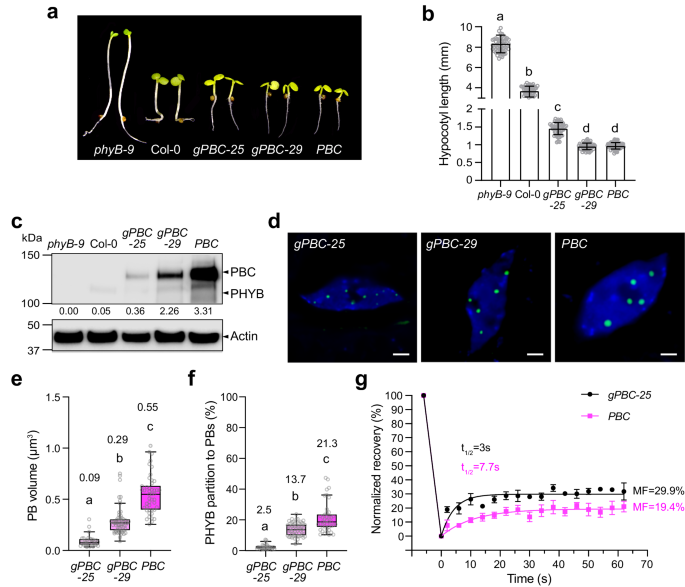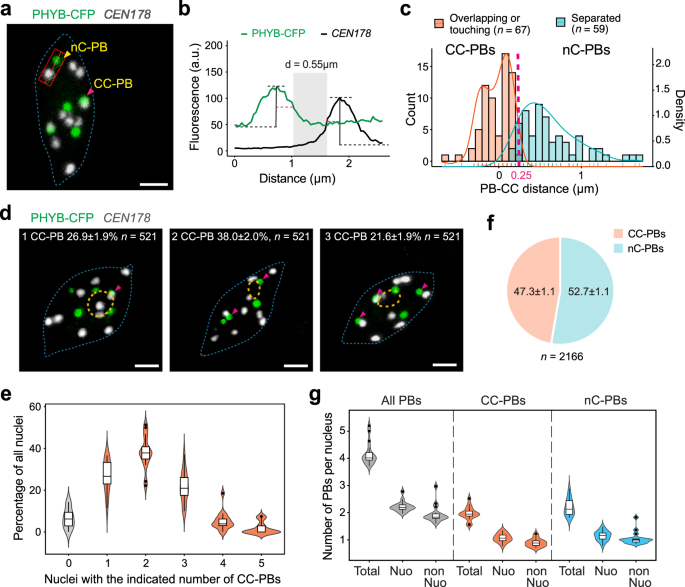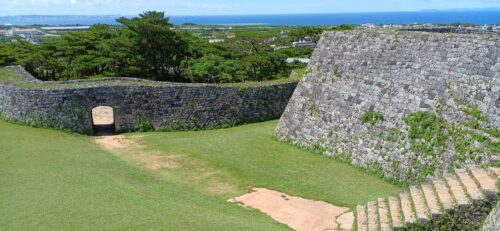2024-05-07 カリフォルニア大学リバーサイド校(UCR)
<関連情報>
- https://news.ucr.edu/articles/2024/05/07/free-forming-organelles-help-plants-adapt-climate-change
- https://www.nature.com/articles/s41467-024-47790-8
- https://www.nature.com/articles/s41467-024-47789-1
フォトボディの形成は、PIF5の分解と安定化という相反する2つのフィトクロムBシグナル作用を空間的に分離する Photobody formation spatially segregates two opposing phytochrome B signaling actions of PIF5 degradation and stabilization
Ruth Jean Ae Kim,De Fan,Jiangman He,Keunhwa Kim,Juan Du & Meng Chen
Nature Communications Published:25 April 2024
DOI:https://doi.org/10.1038/s41467-024-47790-8

Abstract
Photoactivation of the plant photoreceptor and thermosensor phytochrome B (PHYB) triggers its condensation into subnuclear membraneless organelles named photobodies (PBs). However, the function of PBs in PHYB signaling remains frustratingly elusive. Here, we found that PHYB recruits PHYTOCHROME-INTERACTING FACTOR 5 (PIF5) to PBs. Surprisingly, PHYB exerts opposing roles in degrading and stabilizing PIF5. Perturbing PB size by overproducing PHYB provoked a biphasic PIF5 response: while a moderate increase in PHYB enhanced PIF5 degradation, further elevating the PHYB level stabilized PIF5 by retaining more of it in enlarged PBs. Conversely, reducing PB size by dim light, which enhanced PB dynamics and nucleoplasmic PHYB and PIF5, switched the balance towards PIF5 degradation. Together, these results reveal that PB formation spatially segregates two antagonistic PHYB signaling actions – PIF5 stabilization in PBs and PIF5 degradation in the surrounding nucleoplasm – which could enable an environmentally sensitive, counterbalancing mechanism to titrate nucleoplasmic PIF5 and environmental responses.
オリゴペイントを用いて個々のフォトボディを識別することで、温度感受性と非感受性のフィトクロムBが核内の異なる場所に凝縮することが明らかになった Distinguishing individual photobodies using Oligopaints reveals thermo-sensitive and -insensitive phytochrome B condensation at distinct subnuclear locations
Juan Du,Keunhwa Kim & Meng Chen
Nature Communications Published:29 April 2024
DOI:https://doi.org/10.1038/s41467-024-47789-1

Abstract
Photobodies (PBs) are membraneless subnuclear organelles that self-assemble via concentration-dependent liquid-liquid phase separation (LLPS) of the plant photoreceptor and thermosensor phytochrome B (PHYB). The current PHYB LLPS model posits that PHYB phase separates randomly in the nucleoplasm regardless of the cellular or nuclear context. Here, we established a robust Oligopaints method in Arabidopsis to determine the positioning of individual PBs. We show surprisingly that even in PHYB overexpression lines – where PHYB condensation would be more likely to occur randomly – PBs positioned at twelve distinct subnuclear locations distinguishable by chromocenter and nucleolus landmarks, suggesting that PHYB condensation occurs nonrandomly at preferred seeding sites. Intriguingly, warm temperatures reduce PB number by inducing the disappearance of specific thermo-sensitive PBs, demonstrating that individual PBs possess different thermosensitivities. These results reveal a nonrandom PB nucleation model, which provides the framework for the biogenesis of spatially distinct individual PBs with diverse environmental sensitivities within a single plant nucleus.


